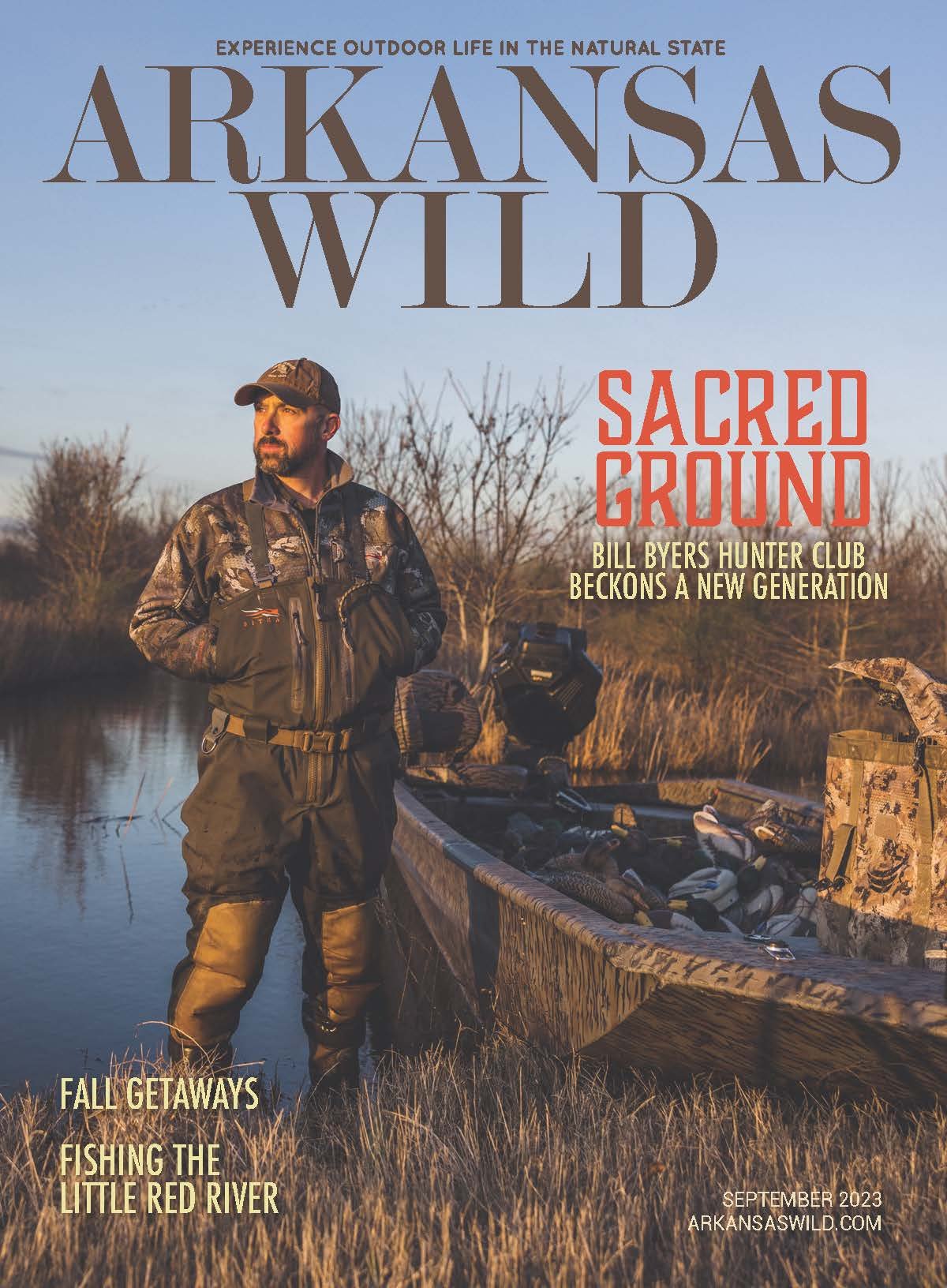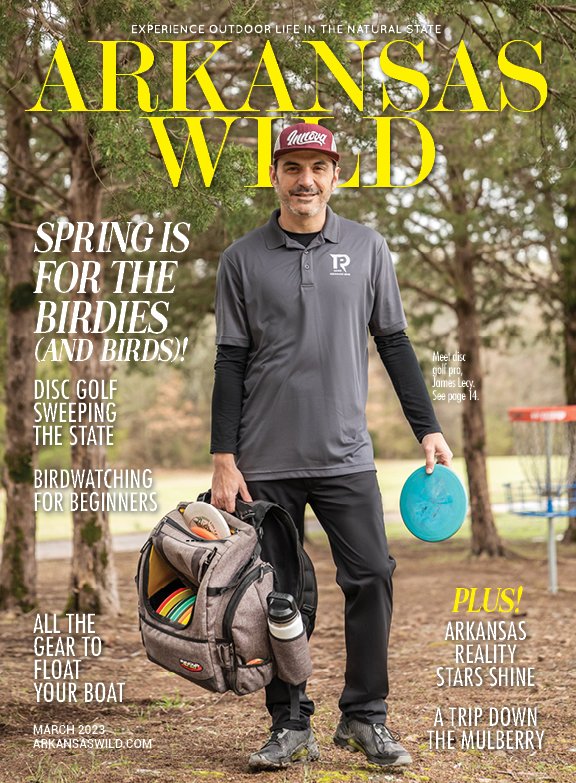Out In The Cold
Chilly weather is crappie time
By Michael Roberts
Mark Hedrick shows off a stellar fresh crappie catch from a December trip to Lake Maumelle.
When the winter months arrive with gray skies and frigid winds, many fishermen hang up their poles and content themselves with telling fish stories somewhere warm. For Mark Hedrick, though, the fish are always biting—no matter the season.
“With fishing—as with life—you get out of it what you put into it,” Mark says with a laugh. We’ve been talking crappie over cups of coffee, and he’s developed the sort of half-mad gleam in his eye that all the most passionate (or perhaps obsessive) fishermen get. But Mark’s not only serious about his own fishing—he’s something of an angling evangelist, passing along the knowledge he’s collected through personal experience and speaking with others for whom the lakes and streams of Arkansas are a second home.
“You can make a lot of friends fishing,” he says. “I’ve never minded sharing knowledge.”
Mark’s love of fishing has taken him to countless bodies of water, but he holds a special love for the deep, clear waters of Lake Maumelle. The lake can be a challenging one to fish without proper know-how, but Mark is adamant: with the right gear, technique and a bit of patience, a live well full of fish is possible for just about anyone.
Fishing expert Mark Hedrick (left) and his son Matt go after crappie on Lake Maumelle.
Mark’s buddy (and long-time Lake Maumelle fisherman) Johnny Lewis shows off a couple of nice crappie caught using Mark’s cold water fishing techniques.
“In deep water like Maumelle, the crappie tend to stack up,” he says. To locate them, he uses a fish finder equipped with side scanning sonar, something he considers a vital piece of equipment. “You can see them in the image. Now, just because they are stacked up doesn’t mean they’re feeding. Sometimes you’ll see lines on the scanner moving away from the group—that means the fish are feeding.”
Coupled with this high-tech approach to finding fish, Mark also utilizes another, more primitive technique. “I look for loons out on the water,” he says. “If you see loons diving—and they can dive up to 35 feet deep—that means there’s fish there.” And once sure he’s found a good spot, it’s time to fish.
“In a clear lake like Maumelle, I use a very light line—usually four pound test,” he says. “I wouldn’t recommend using anything heavier than six pound. Crappie have good eyesight, and the heavier your line is, the more noticeable it becomes.”
Fooling the delicate senses of his prey figures into the type of lure he uses, too. “In the winter months, I use baits with less movement,” he says. “Something that is very active is unnatural in cold water, and you just won’t get as many strikes.”
After that, it’s simply a matter of patience. “Fish slow,” says Mark. “I like to use a light rod, something six-and-a-half to seven feet with a rod tip that allows some play. Cast into the wind, and count your depth down to 12 or 13 feet, then reel in slowly. Increase the depth until you start getting bites. And be sure not to make a lot of noise!”
Beyond these specific crappie tips, Mark also has more general advice for anglers. “Many times, I find myself fishing structures and habitats that other people have built. On lakes like Hamilton, many of those structures are the work of private individuals looking to draw fish up around the private docks of their houses. Every fisherman should respect that as if it were something they built themselves.”
To that end, Mark refuses to use an anchor, preferring a trolling motor to keep him within his selected spot. “The danger of anchoring up around structures is that the anchor can pull them loose and destroy the habitat. Everyone wants to catch fish, but we must respect our shared spaces.”
As a last bit of cold weather advice, Mark says to be aware of the elements. “Wear a life jacket and be sure to carry along a dry change of clothes. Being wet during the winter is more dangerous than people realize.” Put together, it’s a set of advice that will ensure a safe, fun day—and will make you the envy of all your fishing buddies.





